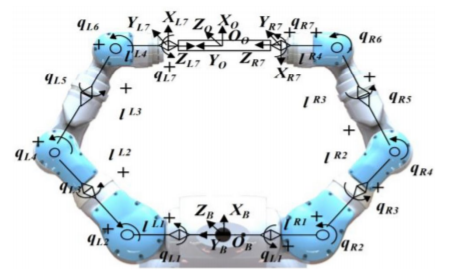Journal of Bionic Engineering (2025) 22:1111–1125https://doi.org/10.1007/s42235-025-00671-2
Cooperative Collision Avoidance Control with Relative Velocity Information for Redundant Dual-arm Robotic Manipulators
Jinyue Liu1 · Chao Xu1 · Xiaohui Jia1 · Yi Wu1 · Tiejun Li2
1 School of Mechanical Engineering, Hebei University of Technology, Tianjin 300000, China
2 School of Mechanical Engineering, University of Science & Technology, Shijiazhuang 050018, China
Abstract
In this paper, a novel cooperative collision avoidance control strategy with relative velocity information for redundant robotic manipulators is derived to guarantee the behavioral safety of robots in the cooperative operational task. This strategy can generate the collision-free trajectory of the robotic links in real-time, which is to realize that the robot can avoid moving obstacles less conservatively and ensure tracking accuracy of terminal end-effector tasks in performing cooperative tasks. For the case where there is interference between the moving obstacle and the desired path of the robotic end-effector, the method inherits the null-space-based self-motion characteristics of the redundant manipulator, integrates the relative motion information, and uses the improved artificial potential field method to design the control items, which are used to generate the collision avoidance motion and carry out moving obstacles smoothly and less conservatively. At the same time, the strategy maintains the kinematic constraint relationship of dual-arm cooperatives, to meet the real-time collision avoidance task under collaborative tasks. Finally, the algorithm simulation indicates that the method can better ensure the tracking accuracy of the end-effector task and carry out moving obstacles smoothly. The experimental results show that the method can generate the real-time collision-free trajectory of the robot in the cooperative handling task, and the joint movement is continuous and stable.
Keywords Redundant dual-arm robotic manipulators · Cooperative operational tasks · Collision avoidance · Relative velocity information

Copyright © 2025 International Society of Bionic Engineering All Rights Reserved
吉ICP备11002416号-1









